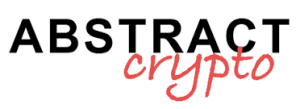The United States Department of Justice has formalized 22 serious charges against Iurii Gugnin, highlighting an international network that exploited the stablecoin USDT (Tether) to facilitate the evasion of USA sanctions and the large-scale movement of illicit capital.
Gugnin and the crypto companies: an international network to bypass sanctions and controls
Iurii Gugnin, a 38-year-old Russian citizen residing in New York, founded Evita Investments and Evita Pay. These two cryptocurrency companies allegedly orchestrated significant money laundering operations, moving over 530 million dollars between June 2023 and January 2025. The strategy revolved around the massive use of USDT, a stablecoin pegged to the US dollar, which allows for fast and less traceable transfers between countries.
Under the direction of Gugnin, Evita was presented as a legitimate payment service. However, documents and testimonies collected by investigators reveal that these companies were masking funds from sanctioned Russian entities, including banks like Sberbank, VTB, Sovcombank, and Tinkoff. Through a dense network of digital wallets and U.S. bank accounts, the capital originated from Russia to be then converted into U.S. dollars and used on an international scale.
Tactics of concealment and falsification of compliance documents
The accusations from the Dipartimento di Giustizia detail how Gugnin falsified documents of compliance and altered invoices to remove any reference to Russian clients. These fraudulent acts were crucial to deceive banks and exchange di criptovalute, hiding the true origin of the funds. Evita formally declared compliance with all AML (Anti-Money Laundering) and KYC (Know Your Customer) regulations, but in reality, the procedures were lacking or nonexistent. Gugnin, who held total corporate control, would also have directly managed every financial operation, facilitating the systematic violation of the rules.
Stablecoin, US banks and sanctioned Russian banks
The mechanism devised by Gugnin was based on three pillars: the use of USDT for rapid cross-border movement; the concealment of the origins of the money through conversions between multiple currencies; the coordination between sanctioned Russian banks and unwitting U.S. financial institutions. Many of the transactions were disguised through frequent wallet changes and the submission of fraudulent documentation to American banks and exchanges, which were thus deceived about the identity of the beneficiaries and the legitimacy of the funds.
This very non-compliance with the regulations represents one of the key accusations. Evita, although officially registered with a money transmission license in Florida, allegedly provided false information about its activities, thus managing to operate despite being linked to banned Russian clients.
Illicit acquisition of strategic USA technologies
The autorità statunitensi emphasize that through these schemes, Gugnin allowed Russian clients to acquire even restricted technological components such as sensitive servers and materials for Rosatom, the Russian state nuclear agency. These movements occurred by forcing the barriers of controlli sulle esportazioni and international sanctions, exposing serious risks to sicurezza nazionale americana and going well beyond mere financial fraud.
Lack of anti-money laundering controls: between Bank Secrecy Act and SAR reports
A central element in the accusatory framework concerns the systematic lack of adoption of AML regulations, required by the Bank Secrecy Act, and the failure to submit SAR (Suspicious Activity Report) that every financial institution, including cryptocurrency exchanges, is required to send to report suspicious transactions exceeding ten thousand dollars.
Evita, contrary to what was stated, had not implemented any serious anti-money laundering control program. This lack allowed the undisturbed transit of over 500 million dollars into the U.S. banking ecosystem, concealing the illicit purposes and allowing the flight of capital to Russia.
Gugnin’s awareness of the risks: investigations by the authorities and digital evidence
The federal investigations have determined that Gugnin was fully aware of the illicit nature of his activities. Online searches such as “how to know if there’s an investigation against me” and “US money laundering penalties,” along with access to sites specialized in detecting investigations, demonstrate the willingness to conceal traces and prepare for potential criminal repercussions. The collected digital traces provide overwhelming evidence of premeditation and criminal intent.
This awareness further strengthens the prosecution’s arguments regarding the deliberate violation of federal regulations and the systematic deception of U.S. financial institutions.
Charges and legal risks for Gugnin
The accusatory framework includes 22 charges, including telecommunications and banking fraud, money laundering, sanctions evasion, and unauthorized management of financial activities. If found guilty, Gugnin could face up to 30 years in prison for each offense related to banking fraud and 20 years for other violations. He is currently detained in New York awaiting trial, considered a flight risk by federal authorities.
The strategic implications for the cryptocurrency sector
The investigation into Gugnin comes at a crucial moment for the regulation of cryptocurrencies in the United States. In particular, it highlights how stablecoin like Tether can be easily used to evade controls, reaching banks and financial systems worldwide in moments and with minimal costs.
This case could mark a turning point in the regulatory tightening on exchanges, digital payment processors, and crypto brokers, with a probable intensification of AML rules and sanctions compliance. The risk, also highlighted in the Evita case, is that the transparency of stablecoins in transaction records may not be sufficient to prevent illicit activities without a truly stringent supervision system.
- Probable strengthening of controls on licenses for digital payment companies.
- Tightening of sanctions for exchanges and banks that facilitate suspicious transactions.
- Increase in international collaborations against money laundering through criptovalute.
An evolving scenario: monitoring and attention on digital currencies
The Gugnin case exemplarily demonstrates how international money laundering through cripto-asset poses unprecedented challenges for American legislation and national security. Consequently, public and private entities will be called upon to increase attention and collaboration on new risky tools related to valute digitali. Staying updated on new regulations and best practices will be essential both for industry operators and for those who invest in or use cripto-asset like Bitcoin.
Looking ahead, the strengthening of compliance and the constant monitoring of transactions represent the key points to ensure that the financial digital transformation proceeds without jeopardizing legality, transparency, and global security.


